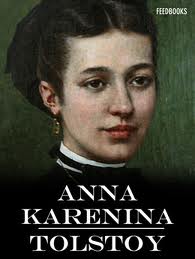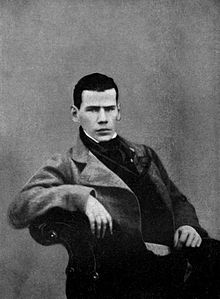The latest movie version of Anna Karenina is not for family viewing, because it deals with “adult” themes more graphically than it needs to. The original novel deals with profoundly adult themes as well, in a profoundly adult way. It’s on every Great Classics list, which brands it as a novel that well-educated people are expected to read. The branding couldn’t be more obvious if it came with a Pretentious Pedagogue’s Seal of Approval, and if we haven’t read it, we feel less well-educated. Maybe even a little guilty, but . . . Man, it’s 1000 pages long! Who has time for that, these days? Couldn’t we just see the movie? Maybe. Emily has seen the movie, and will give her review at the end of this post. But Janie has read the novel (she’s had more time, being twice Emily’s age) and herein shares her views on why it’s worth the effort:
The Book Notes
 I first read Anna Karenina at the age of 22, when I was newly-married with lots of time on my hands. My taste in fiction was a little pretentious but not entirely; genre romances and mysteries really did bore me, and I read plenty of good literature among the mediocre in the library fiction stacks. Occasionally I’d pick up something long and forbidding, with lots of Russian names. The Idiot, The Brothers Karamazov, Crime and Punishment . . . and Anna Karenina, which I remember making an impression on the book (i.e., getting through it) without the book making much of an impression on me.
I first read Anna Karenina at the age of 22, when I was newly-married with lots of time on my hands. My taste in fiction was a little pretentious but not entirely; genre romances and mysteries really did bore me, and I read plenty of good literature among the mediocre in the library fiction stacks. Occasionally I’d pick up something long and forbidding, with lots of Russian names. The Idiot, The Brothers Karamazov, Crime and Punishment . . . and Anna Karenina, which I remember making an impression on the book (i.e., getting through it) without the book making much of an impression on me.
At 28, I tried again, this time as a young mother with less time on my hands. Quite unaware when I started with “Happy families are all alike” that I was letting myself in for a reading experience. Quite unaware that fiction could wrap itself around me so completely. Compelling page-turners were one thing; I’d read many novels that I couldn’t put down, literally–carrying them open to the bathroom, propping them up while washing dishes, rushing through a telephone call so I could get back to the story. But this novel was so packed there were times I had to put it down. I could not go on, but had to breathe everyday air for a while. I particularly remember after Part Four, when so many hanging conflicts rush to resolution: when Levin finally proposes to Kitty and she accepts, when Anna has her baby, when she compels Karenin’s forgiveness over her supposed deathbed, when Vronsky attempts suicide . . . After all that, I could read no further, but had to put the book down, go outside and pace back and forth on the sidewalk. Somehow, that bulging volume of life I’d taken in had to be decompressed.
That’s not to disparage the difficulties. Many Russians, like Tolstoy and Dostoyevsky, were notoriously long-winded and obtuse at times, and spend pages tracking a character’s inner dialogue or the complexities of Russian politics, while the modern reader just wants to find out what happens next. And it may be that you’ve tried, you’ve really tried to get through War and Peace or the Brother Karamazov, but you’re just not susceptible to this particular kind of literature. I understand that, since we’re all not made alike and what moves one will not budge another. Still, some writers may be worth a little extra effort. They are experience-stretchers; reading them expands our minds to contain multitudes, and perhaps even grow in compassion.
“Oh why didn’t I die, that would have been best!” Anna exclaims at the end of Part Four. She doesn’t die when she would have chosen, and when a lesser novelist would have finished her off. That may be Tolstoy’s point: we all have to live, with ourselves and each other. That kind of living (with ourselves and each other) is sometimes notoriously difficult. I mentioned the book to my sister once, and her reaction was instant and visceral: “I hate her.” Not it, but her, the title character. For a reader to feel so forcefully about a fictional person shows how well Tolstoy did his job. “You have to love your characters, even the ones you don’t like,” I tell aspiring fiction writers. Even more important is not to despise them. In that way a novelist is like God, who grants his creatures the integrity to be true to their essential natures, whether noble or venal, whether they lead to heaven or hell.
 Anna Karenina is said to be about a lot of things: the insidious effects of a repressive society, the revolutionary effects of freeing the serfs, the varieties of religious experience, the wages of sin. Most readers today seem to value it as a cautionary tale: just look what happens to women whose true passions are corseted and suppressed—they end up under a freight train! But that reading is as shallow as an overly moralistic reading. I don’t think Anna Karenina is “about” anything, any more than individuals are about anything. It just is. Many novels show how we have to live with our choices, our mistakes, our fate, our calling. Tolstoy shows how we have to live: happily or unhappily, approved or not, satisfied or restless, and draw what lessons you will. The man had some well-known eccentricities and hang-ups, but he wrote from a generally Christian worldview, with a godlike love of his own creation. Anna Karenina is not so much a book to be read as a life–many lives–to be experienced.
Anna Karenina is said to be about a lot of things: the insidious effects of a repressive society, the revolutionary effects of freeing the serfs, the varieties of religious experience, the wages of sin. Most readers today seem to value it as a cautionary tale: just look what happens to women whose true passions are corseted and suppressed—they end up under a freight train! But that reading is as shallow as an overly moralistic reading. I don’t think Anna Karenina is “about” anything, any more than individuals are about anything. It just is. Many novels show how we have to live with our choices, our mistakes, our fate, our calling. Tolstoy shows how we have to live: happily or unhappily, approved or not, satisfied or restless, and draw what lessons you will. The man had some well-known eccentricities and hang-ups, but he wrote from a generally Christian worldview, with a godlike love of his own creation. Anna Karenina is not so much a book to be read as a life–many lives–to be experienced.
So if you have time over the Christmas break and feel like being a little contemplative, see how far you can go with Anna. The first few chapters are actually pretty easy to get into, but translation is very important. I have it on good authority that the best translators of Tolstoy are Richard Pevear and Larissa Volokhonsky (they worked as a team), with Rosemary Edmonds as a distant second. Avoid Constance Garrett, who, according to my authority, “bowdlerized and Victorianized” the supple grit of the Russian language. It’s very helpful if your edition includes a list of characters, since Russian names are fiendishly difficult for Anglos to sort out. It helps to know that every character’s given name is followed by a patronymic (the father’s name), which ends in –ich for males and –ovna for females; when a character is formally addressed, both names are used. But intimate companions and children are addressed by their nicknames, such as Kostya for Constantine or Seryohza for Sergei. Tolstoy refers to adult male characters by their last (often multisyllabic) names, and female characters by the first names, and then there are the many titles: Prince, Count, Countess. Lacking a list of, it’s not a bad idea to jot down characters who appear more than once. Otherwise, sink down into these lives and times and experience them.
Emily’s Two-Minute Movie Review
Since Emily reviewed the movie version of Anna Karenina recently for World Magazine (to read the review, click here), she thought she’d do a quick rundown for our readers too. Let us know if you like the format, and maybe we’ll do more!
[powerpress]
If you’d like to tackle another challenging but less-intimidating book, see Janie’s read-along posts of The Abolition of Man and That Hideous Strength. Also, check out Emily’s Christ in Literature series, beginning here.
Support our writers and help keep Redeemed Reader ad-free by joining the Redeemed Reader Fellowship.
Stay Up to Date!
Get the information you need to make wise choices about books for your children and teens.
Our weekly newsletter includes our latest reviews, related links from around the web, a featured book list, book trivia, and more. We never sell your information. You may unsubscribe at any time.
We'd love to hear from you!
Our comments are now limited to our members (both Silver and Golden Key). Members, you just need to log in with your normal log-in credentials!
Not a member yet? You can join the Silver Key ($2.99/month) for a free 2-week trial. Cancel at any time. Find out more about membership here.
3 Comments
Leave a Comment
You must be logged in to post a comment.


I’ve been wanting to tackle this for awhile. Thanks for the extra encouragement to go for it!
Sounds like a great New Year’s Resolution to me…. : )
Yes to Anna Karenina! Yes to the Pevear and Volokhonsky translation (so much a team that they are married)! My reading journey was similar to yours. I read it first in graduate school after my pastor mentioned it in a sermon for its insights on marriage. I read it again just after I got married (we were thinking of naming our first son Levin—hmmm) and for the third time this fall. I’ve even given it as a wedding gift a few times (to people who love to read).
Your post makes me consider picking it right back up again.
I’m with you—sink down into these lives and times and experience them!